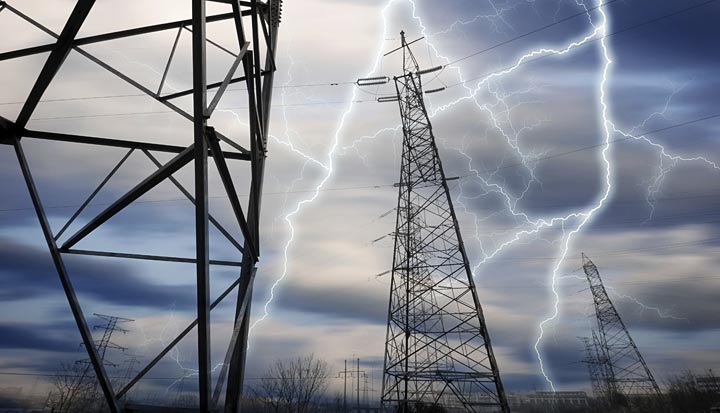New York State Funds Brookhaven Lab to Study Use of Radar to Predict Storm Electrical Outages
August 13, 2014

The U.S. Department of Energy’s Brookhaven National Laboratory has received $250,000 from the New York State Energy Research and Development Authority (NYSERDA) to investigate how weather radar data can be used in real time to speed restoration of electric utility systems during and after significant weather events. The Brookhaven Lab project is one of seven grid-related projects across the state that will share a total of $3.3 million in funding.
"As we continue to witness the impacts of extreme weather, it is more important than ever to invest in making our energy infrastructure stronger and smarter," said New York State Governor Andrew M. Cuomo. "These projects will improve grid resiliency, strengthen utility performance and make the delivery of energy more efficient.”
The Brookhaven Lab project aims to increase the overall resiliency of the electric grid managed by two New York State utilities — Orange and Rockland Utility (ORU) and Central Hudson Gas & Electric (CHGE) — and prepare them for future demonstration projects. The experience gained through this project is also expected to provide a template for other NY State utilities to follow. ORU will contribute more than $84,000 to the project, which is expected to take a year to complete.
“We’ll be working across the Laboratory as an integrated team,” said Stephanie Hamilton, Brookhaven Lab’s Smarter Grid R&D manager. “Our meteorologists, along with our grid engineers, probabilistic risk assessment engineers, and computation experts will technically and scientifically support our utility partners and their technical consultants.”
Instead of the spreadsheet calculations that many utilities use today, the plan calls for collecting and sending accurate weather data and storm predictions to utilities in real-time to predict where outages might occur in their systems and enable them to respond immediately. Brookhaven will also develop progressive analysis tools that can be used by the utilities to adapt storm response activities as new real-time radar and other weather data become available over the course of the storm.
“We have begun to think differently about tools and technology to help with storm prediction and response,” said ORU Director of Electrical Engineering Angelo Regan. “We’re pretty good at restoration when the storm hits. The tougher piece is the upfront piece, 12 hours before the storm, or if something big is predicted, maybe three to five days before.”
Radar coverage on the East Coast is extensive – almost 100 percent. Radar provides accurate and rapid real-time detection of storm activity and can identify very strong, localized weather events including tornados, derechos (straight-line winds), microbursts, and hail. This data can help utilities compile accurate estimates of the extent of storm activity and improve estimates of equipment outages, enabling more rapid repairs and shortened storm response times. It can also provide improved analysis capabilities for utilities on how to harden grid systems and plan future expansion.
“Understanding weather’s impact on the reliability of the electric distribution system will provide a valuable resource for our electrical distribution planners to construct a more resilient electrical grid through targeted storm-hardened construction and advanced circuit throw-over schemes,” said CHGE Electrical Distribution Engineer Sal Martino. “With enhanced knowledge regarding how weather elements such as high winds, ice accretion, and heavy wet snow affect our service territory, Central Hudson will be able to drive more programs and initiatives to improve electric service reliability as well as targeting other reliability programs.”
Using radar data in outage prediction systems can save utilities millions of dollars in power downtimes and save customers considerable inconvenience. Other economic benefits include returning New Yorkers to work more quickly following major power outages and significantly lowering economic losses caused by storms. At ORU for example, a one-hour reduction in storm response can save $100,000 to $200,000. Across the state, millions of dollars would be saved for each hour of storm response reduction.
2014-5091 | INT/EXT | Newsroom









